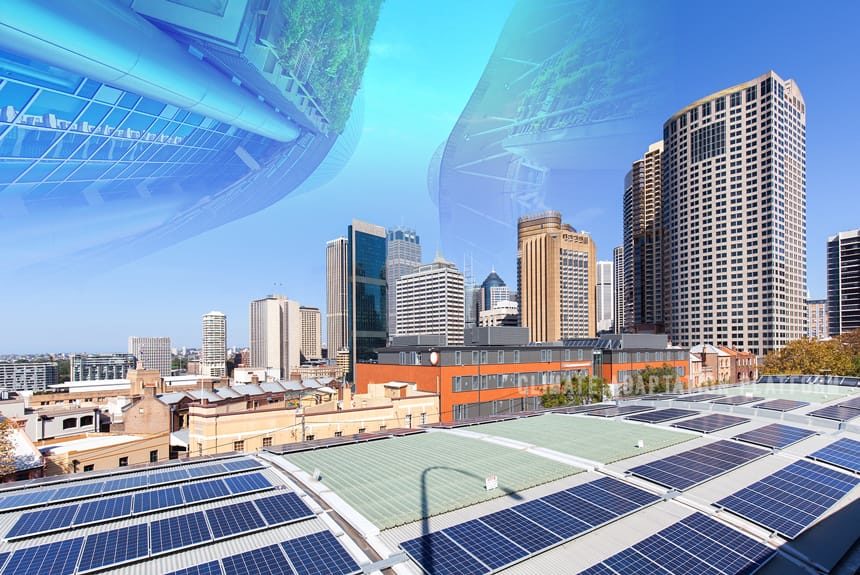There is no denying that climate change is upon us. Climate scientists link the recent extreme events around the world to climate change – the Pacific Northwest and southwestern Canada heatwave, California droughts and wildfires, Siberia, Turkey, and Greece wildfires, extreme floods in Germany, China, Canada. And as the temperature continues to rise, the frequency and severity of these natural events will continue for decades to come (Gibbens, 2021).
The growing body of climate change studies and research tells us that we can still mitigate the worst impacts of climate change through urgent and substantial reduction of our GHG emissions.
The IPCC 2021 report states that we need “rapid and large-scale reduction in GHG emissions” to achieve the Paris Agreement goal of 1.5°C or even 2°C warming limit.
Our cities generate 75% of global CO2 emissions, with buildings as one of the biggest contributors.
D’Acosta (2021) reports that “combating climate change in buildings must focus on electricity decarbonization, electrification, and energy efficiency.” Singapore is one of the countries attempting to do this, which aims to Green mark certify at least 80% of its public and commercial buildings by 2030 (D’Acosta, 2021).
To reduce the GHG that buildings emit, the article proposes the following:
- Prioritise energy efficiency within new and existing buildings through digital technology. Retrofitting buildings with digital technology will give an average payback of one to three years, compared to 10 years for investing in insulation.
Delorme (2021) says there is a 30 percent reduction in energy usage and a similar decrease in operational costs due to smart building technologies.
- Deploying microgrids and creating a clean source of backup power for buildings. Solar power and energy storage are not as pricey as they used, dropping 89% in ten years. Having a separate source of backup power generated by clean and renewable sources is can boost the building’s resilience in the face of natural disasters.
- Design buildings as an energy-generating asset rather than the leading producers of CO2. Imagine the buildings becoming all-electric powered by solar, wind, and other sources of zero-carbon electricity, and the building itself generates power. Decentralized and distributed energy generation like rooftop solar or solar glass windows can make this possible.
Challenges for net-zero and energy-generating buildings
Achieving this goal needs forward-thinking leaders who can see beyond the upfront costs and see the long-term energy and sustainability benefits. After investing in the recommendations mentioned above, the next step is to bring in various energy monitoring and reporting systems, building automation, metering, and a comprehensive life-cycle approach to sustainability.
Innovative solutions to address climate change and promote sustainability are huge undertakings but necessary to avoid the catastrophic impacts of a climate-changed world.
Sources:
Gibbens, S. (2021, December 7). 2021’s weather disasters brought home the reality of climate change. National Geographic. Retrieved from https://www.nationalgeographic.com/environment/article/this-year-extreme-weather-brought-home-reality-of-climate-change
D’Acosta, L. (2021, December 10). How Changes in Building Infrastructure Can Truly Combat Climate Change. Forbes. Retrieved from https://www.forbes.com/sites/forbestechcouncil/2021/12/10/how-changes-in-building-infrastructure-can-truly-combat-climate-change/?sh=7b3677073c46
Delorme, P. (2021, June 18). Building a better, decarbonised world means raising standards for all buildings, new and old. Future Net Zero. Retrieved from https://www.futurenetzero.com/2021/06/18/building-a-better-decarbonised-world-means-raising-standards-for-all-buildings-new-and-old/



Leave a Reply